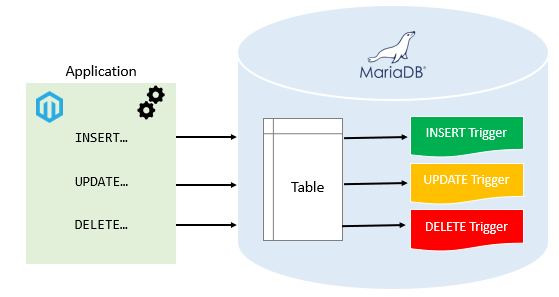MariaDB Database Triggers: Everything You Need to Know
Have you ever heard of MariaDB database triggers? If not, you’re in the right place! In this article, we will explore everything you need to know about MariaDB database triggers, from what they are to how they can be used to enhance your database functionality. So, sit back, relax, and let’s dive into the world of MariaDB triggers!
What are MariaDB Database Triggers?
First things first, let’s talk about what MariaDB database triggers actually are. In simple terms, a trigger is a set of instructions that are automatically executed in response to certain events occurring in a database table. These events can include inserting, updating, or deleting records from a table.
With MariaDB database triggers, you can specify what actions should be taken when these events occur. This can be incredibly useful for enforcing business rules, implementing auditing functionality, and ensuring data consistency.
How to Create a MariaDB Database Trigger
Creating a trigger in MariaDB is a relatively straightforward process. Here’s a basic example of how you can create a trigger that automatically updates a timestamp column whenever a record is inserted or updated in a table:
CREATE TRIGGER update_timestamp
BEFORE INSERT OR UPDATE ON your_table
FOR EACH ROW
SET NEW.timestamp_column = NOW();
In this example, “update_timestamp” is the name of the trigger, “your_table” is the name of the table you want to apply the trigger to, and “timestamp_column” is the name of the column that you want to update with the current timestamp.
Benefits of Using MariaDB Database Triggers
There are several benefits to using MariaDB database triggers in your database management system. Some of the key benefits include:
- Enforcing data integrity constraints
- Implementing complex business rules
- Auditing changes to database records
- Improving data consistency
Overall, using triggers can help you streamline your database operations and ensure that your data remains accurate and up-to-date.
Best Practices for Using MariaDB Database Triggers
While MariaDB triggers can be incredibly powerful, it’s important to follow best practices to ensure that they are used effectively and efficiently. Here are some tips for using triggers in your MariaDB database:
- Avoid creating complex triggers that can impact performance
- Document your triggers to explain their purpose and functionality
- Test your triggers thoroughly before deploying them in a production environment
- Regularly review and update your triggers as needed
By following these best practices, you can make the most of MariaDB triggers and leverage their power to enhance your database management capabilities.
Conclusion
In conclusion, MariaDB database triggers are a powerful tool that can help you automate tasks, enforce data integrity, and improve your database’s overall performance. By understanding how triggers work and following best practices for their use, you can take your MariaDB database to the next level.
We hope this article has provided you with a solid foundation for understanding MariaDB triggers and how they can benefit your database management efforts. If you have any questions or would like to learn more about MariaDB triggers, feel free to reach out to us. Happy trigger creating!
